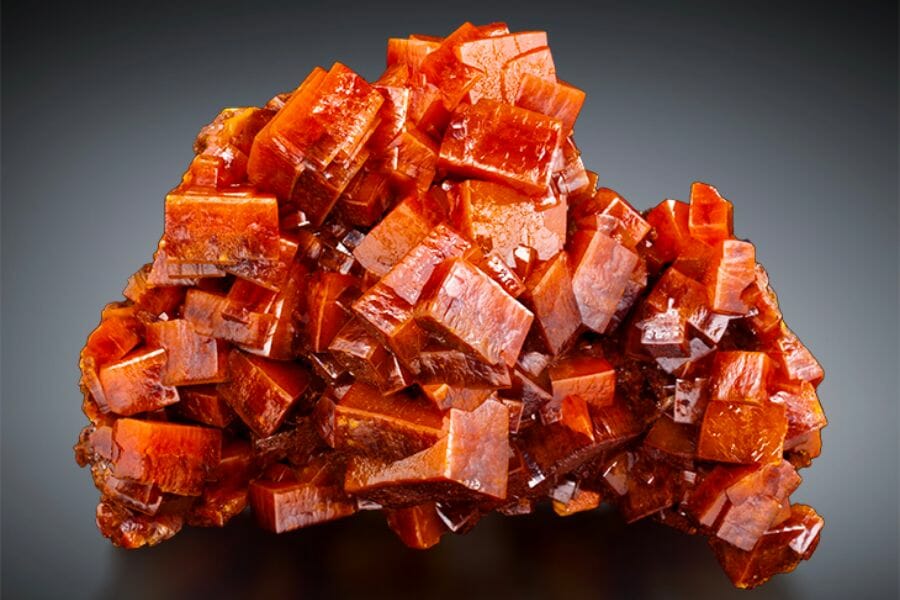Finding crystals can be a rewarding adventure, offering a unique way to explore the natural beauty and geology of the region. Whether you’re a seasoned rockhound or just getting started, knowing where to look is key to uncovering these hidden treasures.
In this state, a variety of locations provide opportunities to discover different types of crystals. From rocky outcrops in the mountains to stream beds that carry sparkling surprises, each area offers its own unique finds for those willing to search.
We can help you get started with some places you can explore for crystals below!
Crystals you can find in the US
The United States offers a wide range of crystals that reflect its diverse geology. From vibrant gems to more subtle mineral formations, there’s something to discover in nearly every region.
Calcite
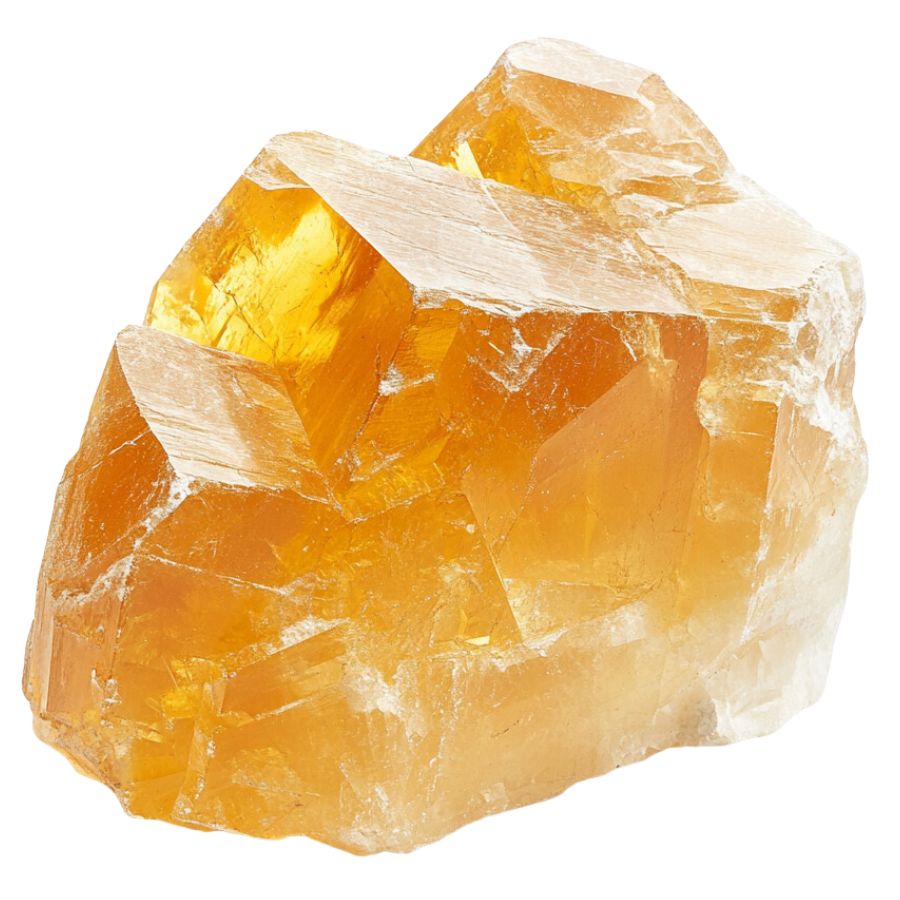
With a variety of forms and a unique property of double refraction, calcite allows objects viewed through the crystal to appear doubled. This mineral can appear in a spectrum of colors, with pure forms typically being transparent or white.
In addition, calcite reacts vigorously with acids, which aids in distinguishing it from other minerals. It also frequently contributes to the structure of sedimentary rocks such as limestone.
Gypsum
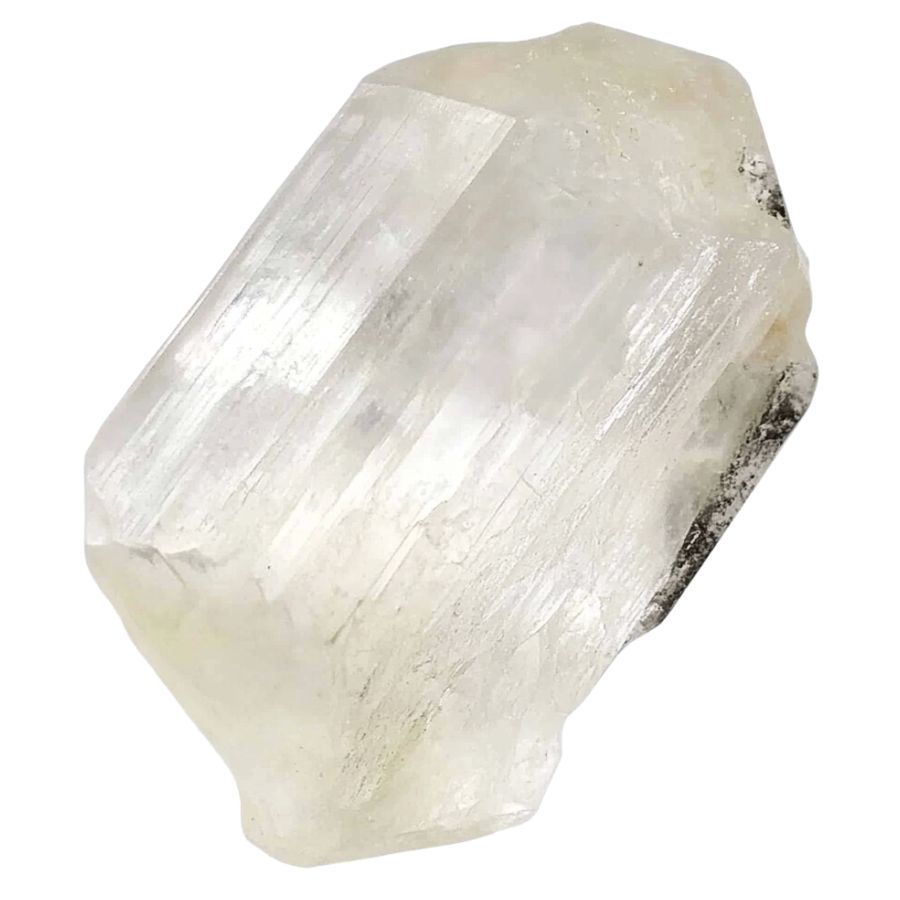
Gypsum’s notable softness allows it to be easily scratched with just a fingernail, often presenting as white or very light-colored in its pure form.
It manifests in both crystalline forms, like selenite, and massive forms such as alabaster, making it versatile in use and appearance.
Gypsum is also essential in the construction industry and is a key component in the manufacture of plaster and drywall.
Fluorite
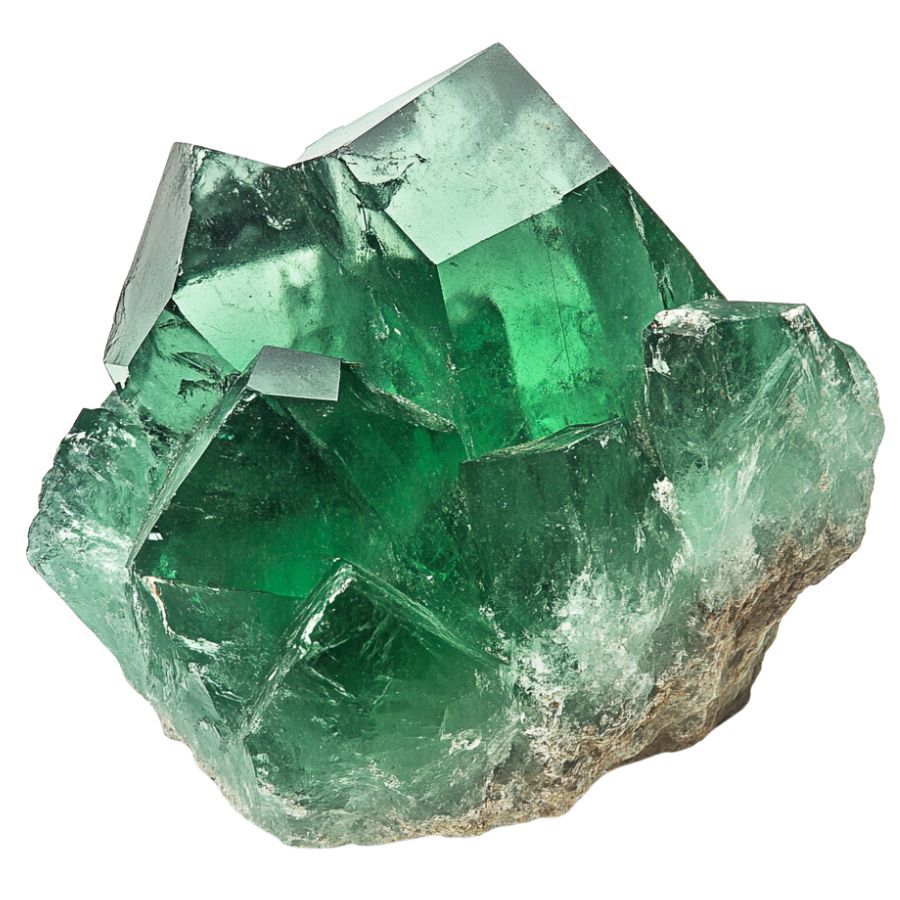
Fluorite comes in a wide range of vibrant colors, including purples, greens, blues, and yellows, and is known for forming in well-defined cubic crystals.
Beyond this, fluorite exhibits fluorescence under ultraviolet light! It can also be used in various industrial applications, including as a flux in steelmaking.
Galena
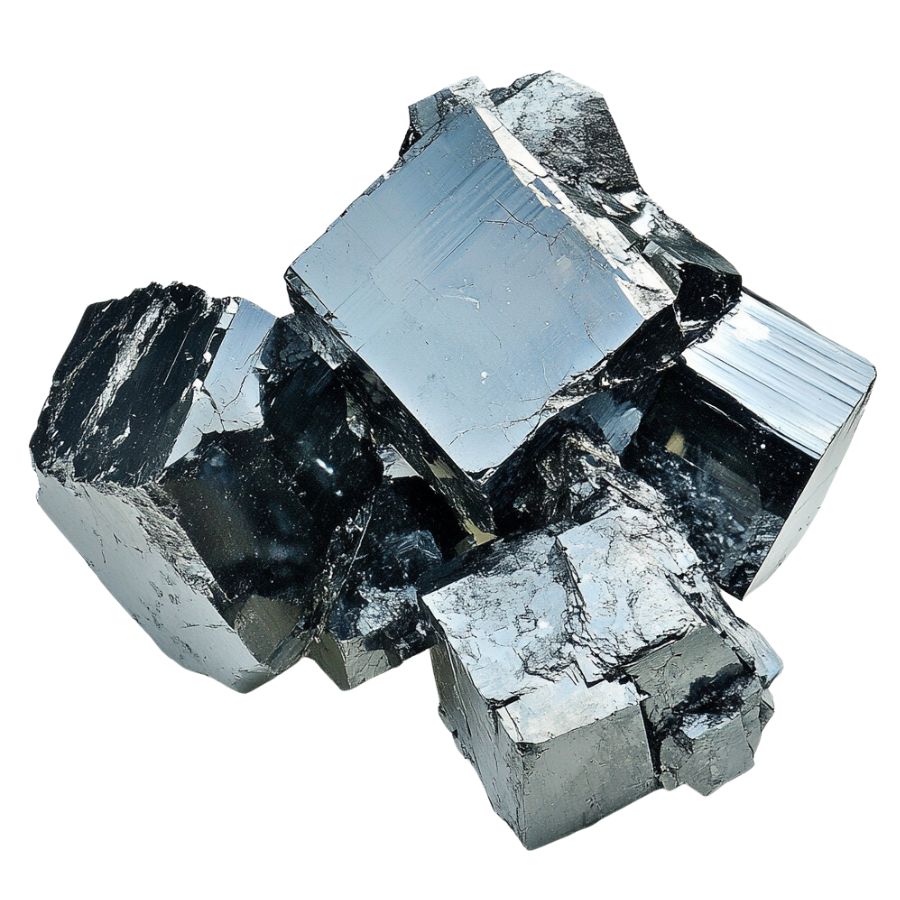
Galena distinguishes itself with a metallic luster and high density, typically found in a cube-like form. It serves as the primary ore of lead, making it important in the metal industry, while its shiny, silver color attracts collectors.
Not only does its appearance make it a subject of interest, but its weight and texture provide tangible lessons in mineral density and metallic properties. Galena also often contains traces of silver, adding to its commercial and educational value.
Corundum
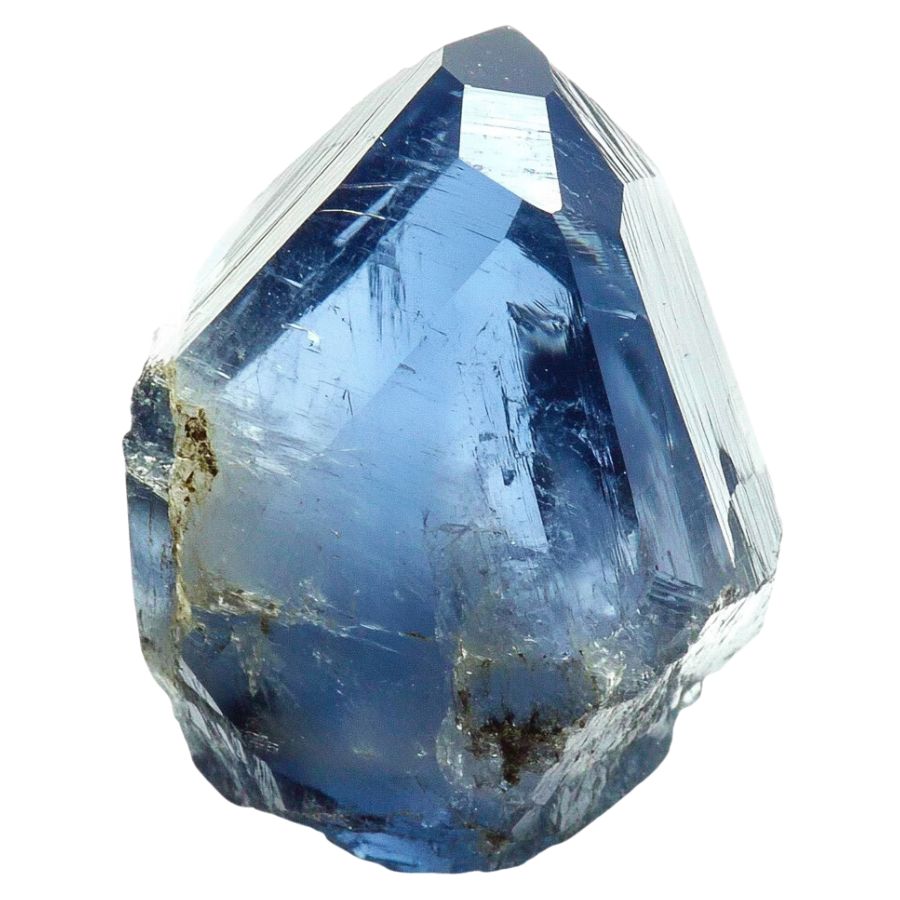
Corundum is a mineral that comes in a variety of colors, though it is typically transparent or gray. Its most famous forms are sapphires and rubies, which are prized for their vibrant blue and red hues.
The mineral is known for its remarkable hardness, ranking just below diamond on the Mohs scale. This durability makes corundum ideal for industrial abrasives and cutting tools, as well as a popular choice for fine jewelry.
Quartz
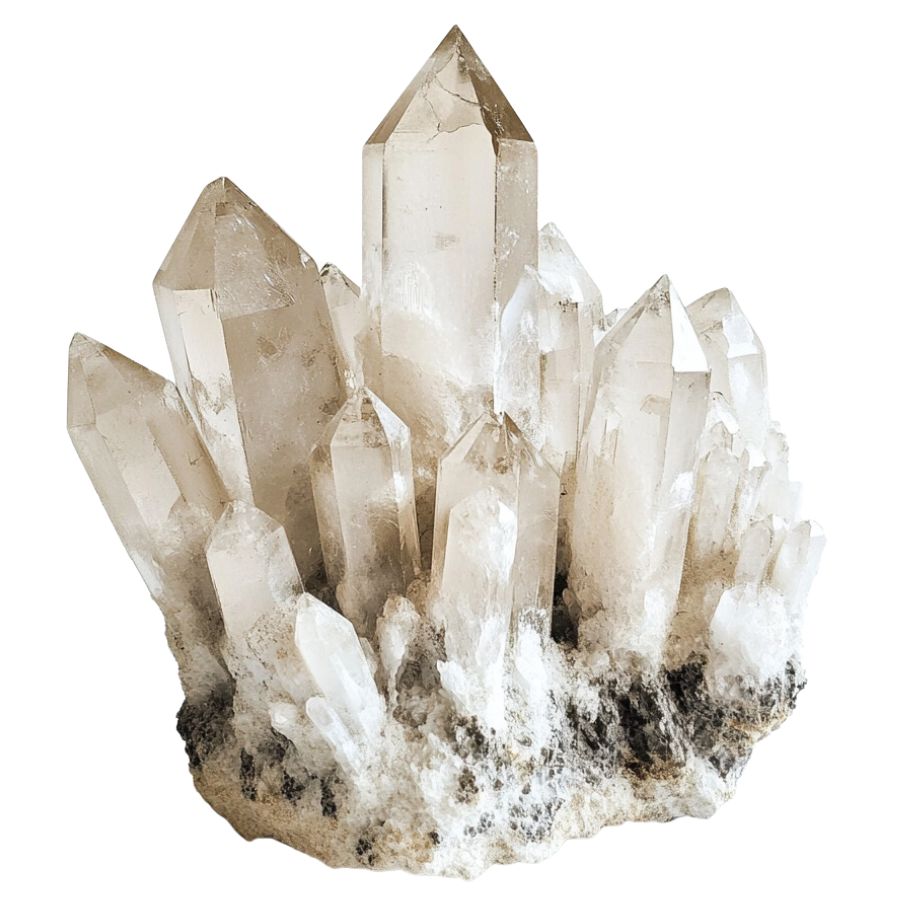
Quartz is among the most common minerals in the Earth’s crust and is prized for its durability and variety. It forms in a wide range of colors and types, from clear rock crystal to purple amethyst.
The mineral is notable for its hardness and durability, which contribute to its use in a variety of applications. Quartz is also popular in the manufacturing of electronics and watches due to its piezoelectric properties, which allow it to convert mechanical pressure into electrical energy.
Pyrite
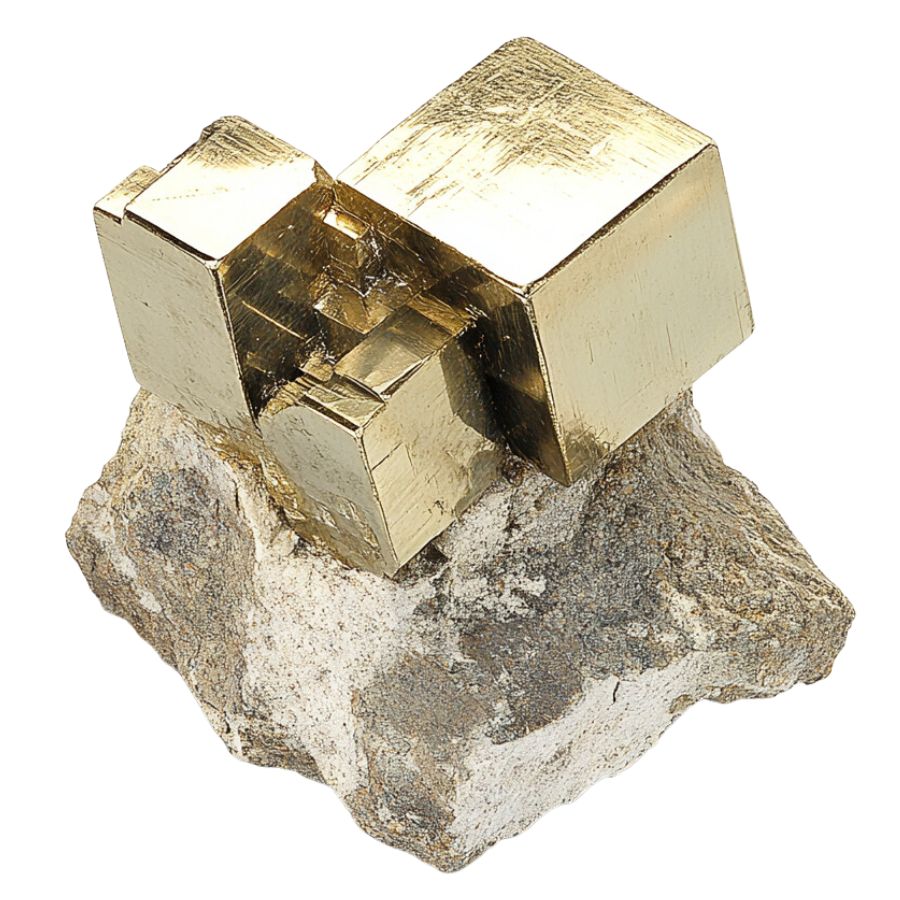
Often mistaken for gold due to its metallic luster and pale brass-yellow hue, pyrite is known colloquially as “fool’s gold.” Its characteristic cube-shaped crystal formations look man-made but are actually completely naturally formed!
Pyrite also has historical importance in producing sulfur dioxide for sulfuric acid production.
Rhodochrosite
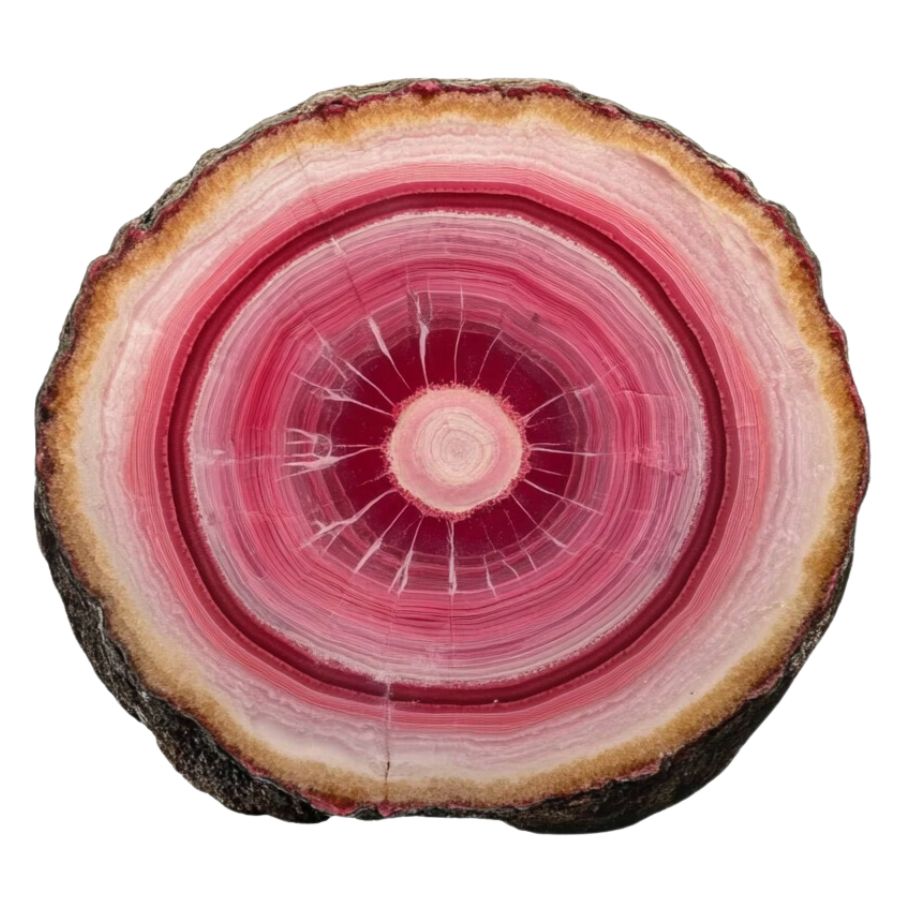
Rhodochrosite stands out with its rich pink and red hues, making it highly desirable as both a mineral specimen and a gemstone.
It typically forms in layered or stalactitic structures, with bands of colors that showcase how it grew over millions of years.
Beyond its beauty, rhodochrosite is significant as the main source of manganese, an essential element used in metal alloys.
Rhodonite
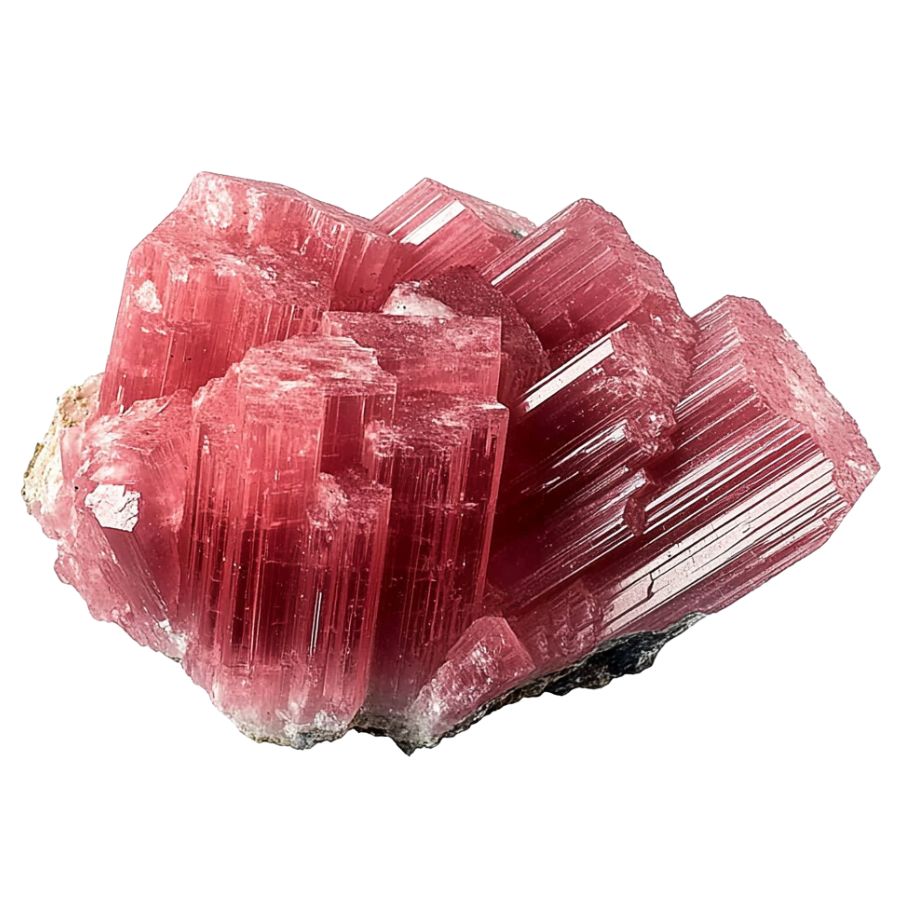
Appreciated for its deep pinks and reds, often complemented by black manganese oxide veins, rhodonite presents a dramatic appearance. It is typically found in metamorphic rocks and is used both as an ornamental stone and in jewelry.
In geology, rhodonite is significant for its role in metamorphic processes and its association with other manganese-rich minerals. It can be found in metamorphosed sedimentary rocks and is sometimes used as an indicator of the presence of manganese deposits.
Vivianite
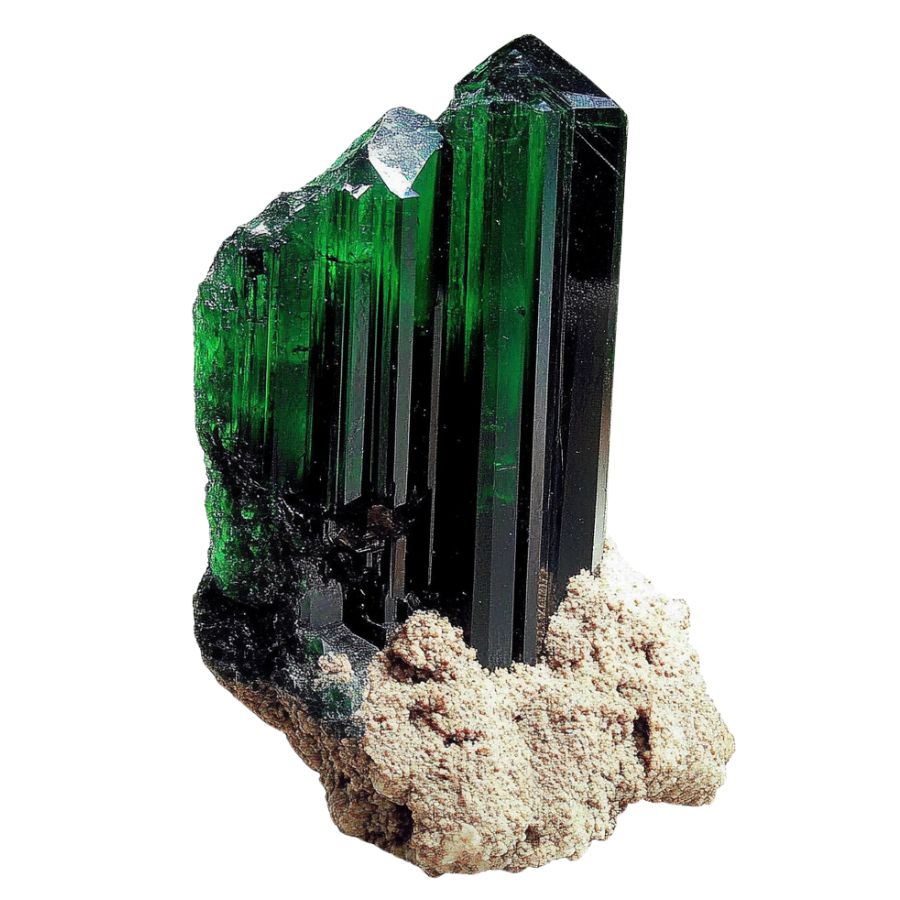
Vivianite, an iron phosphate mineral, emerges in low-oxygen environments like peat bogs or iron-rich deposits. Its striking blue to green color, which can change to a lighter shade over time due to oxidation, makes it a distinctive mineral.
Found in various geological settings, vivianite provides clues about the local conditions and the presence of phosphate deposits.
The Types of Arizona Crystals You Can Find
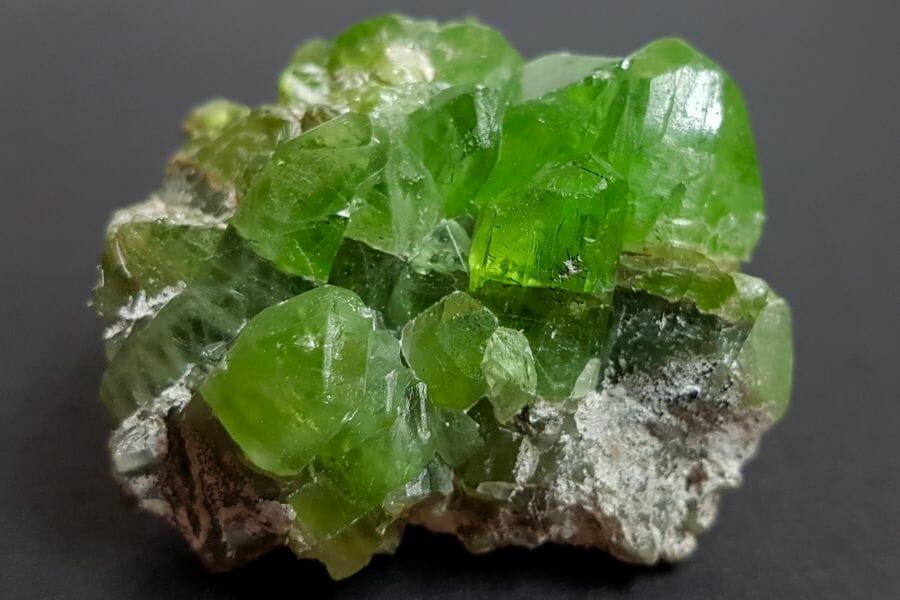
Crystals are natural mineral formations that grow into a range of unique shapes and colors, admired for their beauty and symbolism for centuries. And Arizona is home to a rich variety of crystals, making it a popular destination for crystal mining. Below are some of them:
Rare crystals found in Arizona
- Amethyst
- Azurite
- Peridot
- Turquoise
- Vanadinite
- Wulfenite
More common crystals found here
- Agate (Fire)
- Aragonite
- Calcite
- Chalcedony
- Chalcopyrite
- Chrysocolla
- Celestite
- Copper
- Covellite
- Epidote
- Fluorite
- Galena
- Hematite
- Jade
- Jasper
- Malachite
- Opal
- Pyrite
- Serpentine
- Sunstone
What rough crystals look like
When you’re out looking for crystals on your own it’s important to know what you’re looking for. This is what you need to look out for:
Look for exteriors like this
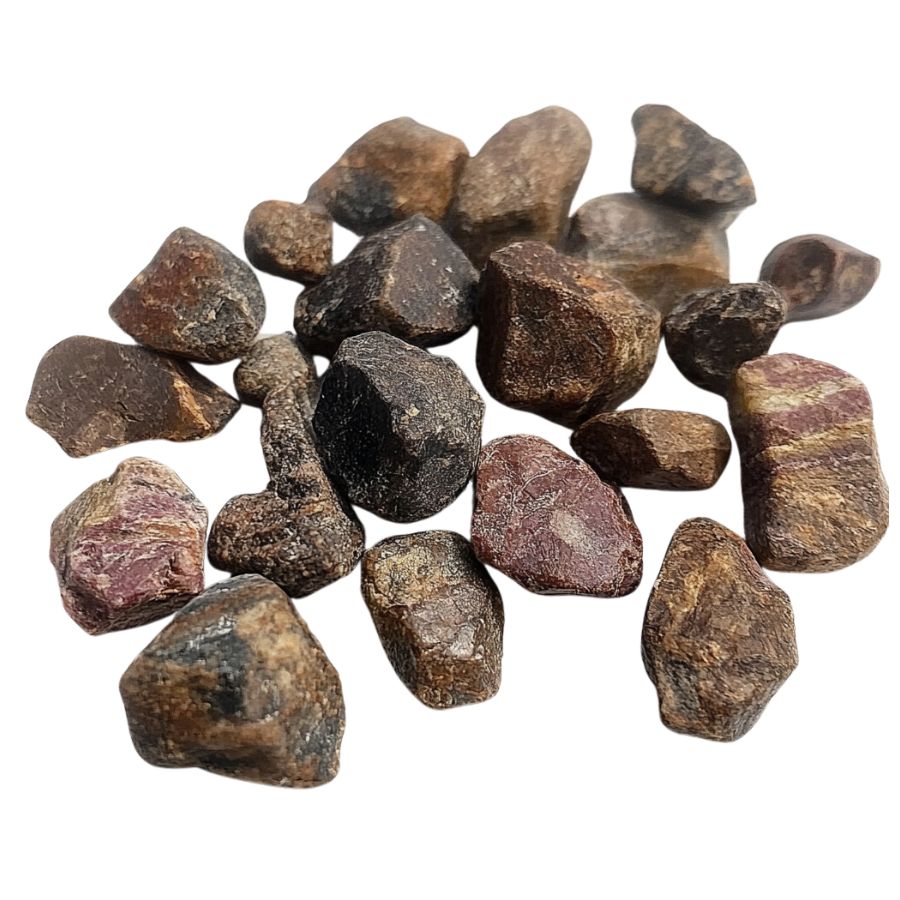
When you’re out searching for crystals in the wild, it’s essential to keep in mind that what you find won’t look like the polished stones you see in stores. One important tip is to consider what certain crystals look like in their raw, natural form.
Without the shine and smooth finish, crystals might appear rough, with jagged edges or earthy tones masking their true beauty. Understanding this can help you spot potential finds that might otherwise be overlooked.
Examine the crystal structure and shape
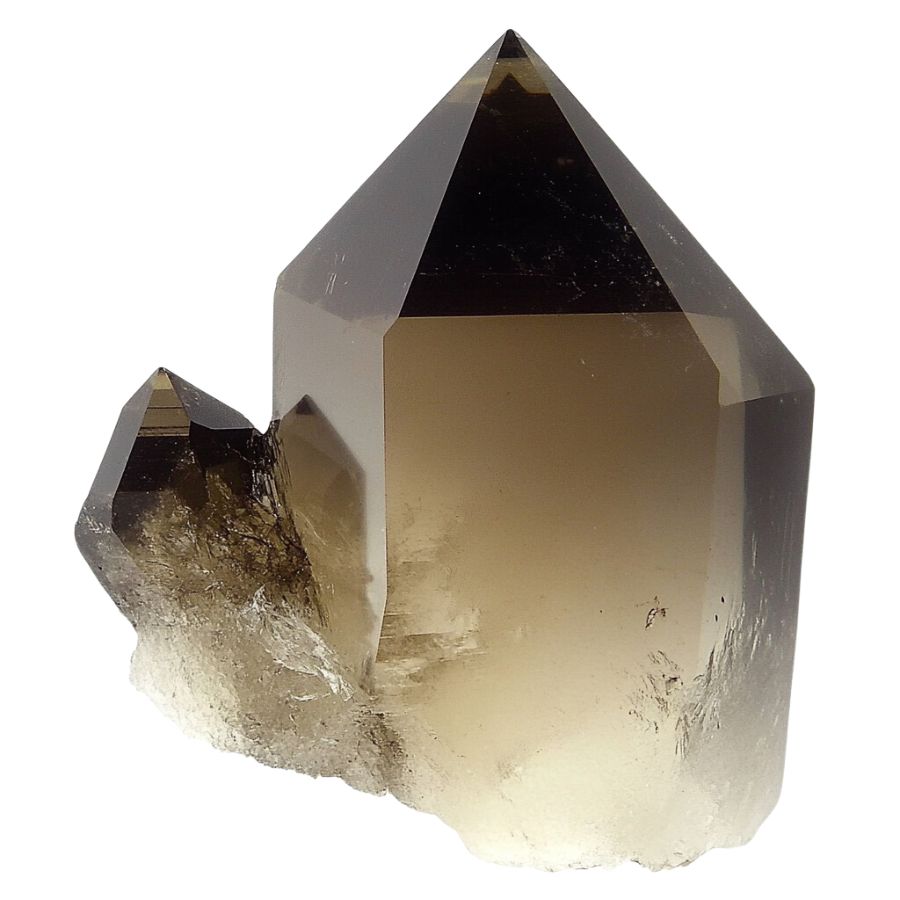
Crystals often form in specific geometric patterns that can be key to identifying them. For example, quartz is known for its hexagonal prisms, while halite typically forms cubic shapes.
By recognizing these distinct patterns, you can differentiate between various types of crystals and better understand what you’ve found.
Observe color
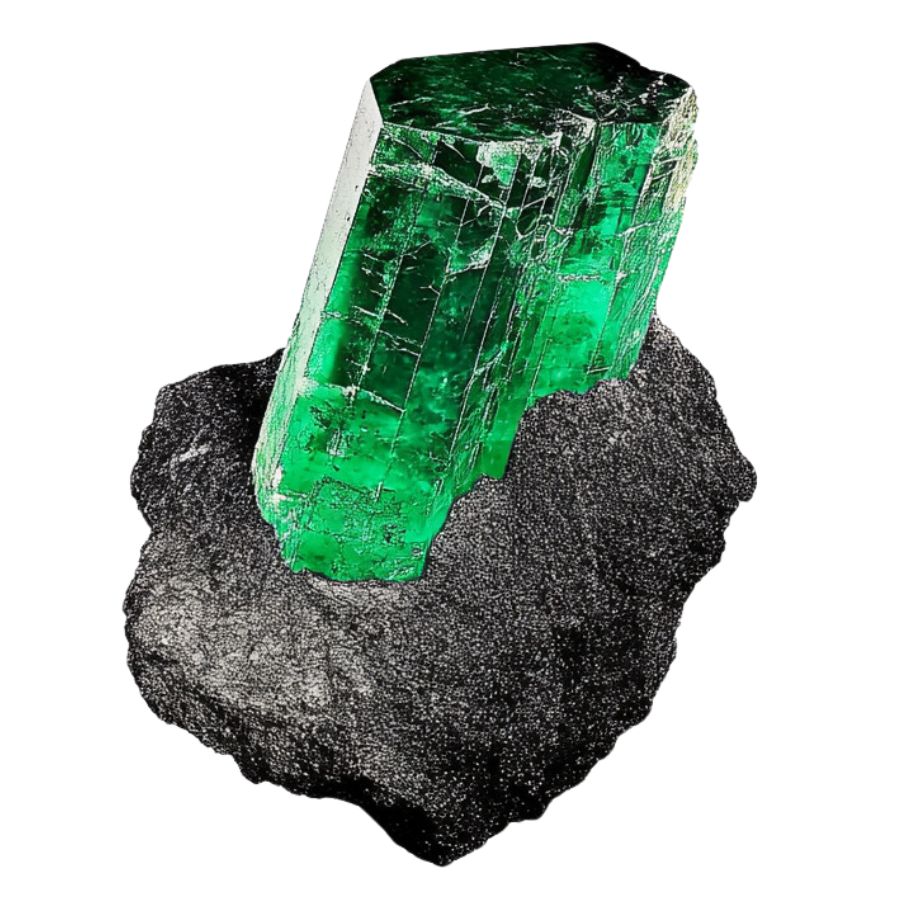
Some crystals are known for their distinct hues, like the deep purple of amethyst or the vibrant green of emerald. However, not all crystals will have strong colors; some may be clear or only slightly tinted.
Check the luster
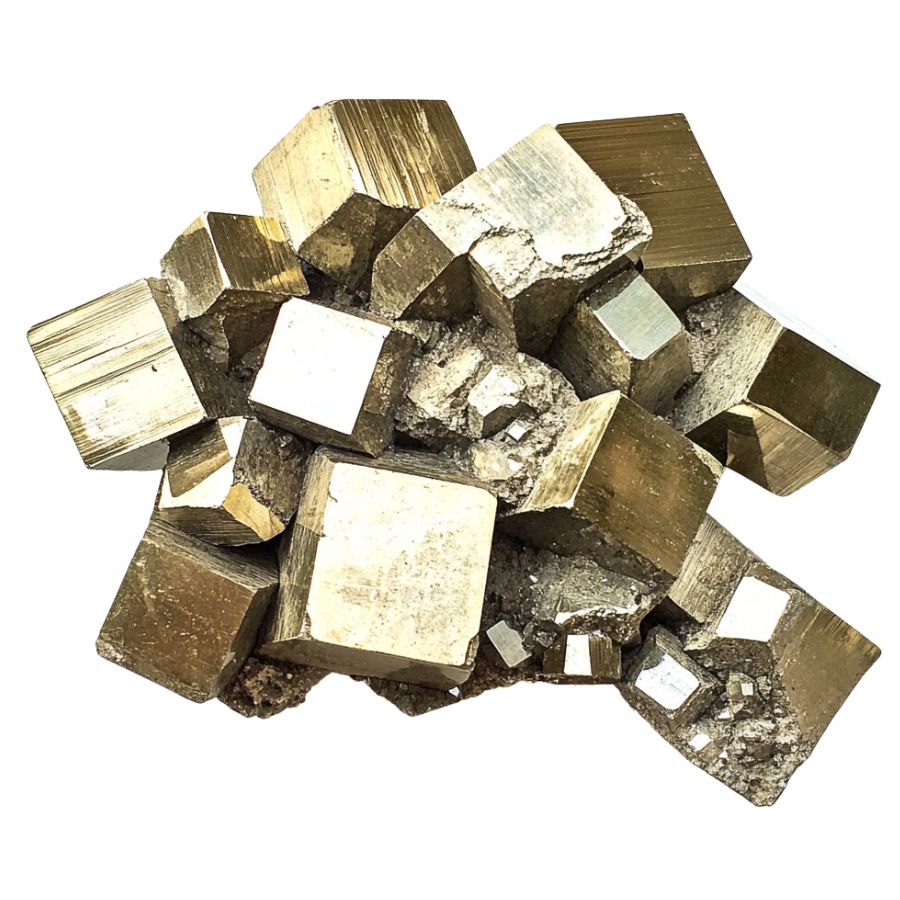
Luster refers to how a crystal’s surface interacts with light. Some crystals might have a shiny, glassy luster, while others may appear metallic or dull. This characteristic can help you determine the type of crystal you’ve found.
However, it’s important to remember that luster isn’t always obvious right away. In some cases, a crystal’s true luster will only become apparent after it’s been cleaned or polished, so keep this in mind as you examine your finds.
Evaluate the transparency
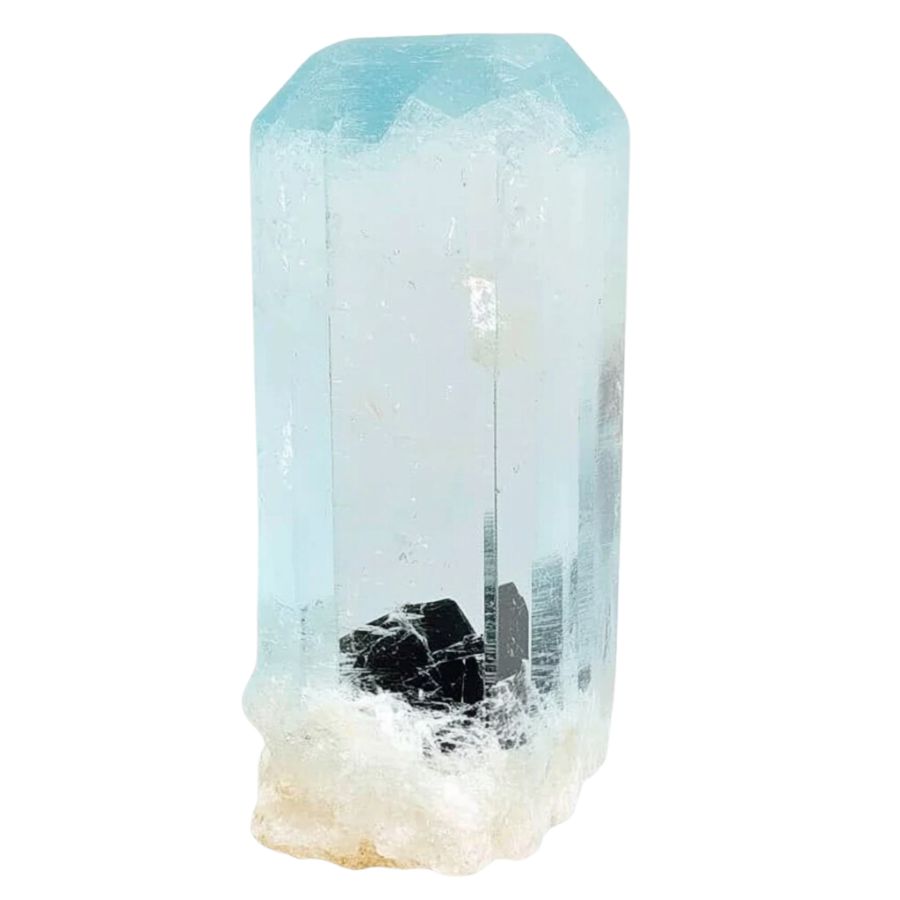
Pay close attention to how much light passes through the crystal. Some crystals are completely clear, allowing light to pass through easily, while others may be opaque and block light entirely.
You might also encounter crystals with translucent edges but opaque centers. These variations in transparency can offer valuable clues about the type of crystal you’ve found, making it easier to identify and appreciate your discovery.
A Quick Request About Collecting
Always Confirm Access and Collection Rules!
Before heading out to any of the locations on our list you need to confirm access requirements and collection rules for both public and private locations directly with the location. We haven’t personally verified every location and the access requirements and collection rules often change without notice.
Many of the locations we mention will not allow collecting but are still great places for those who love to find beautiful rocks and minerals in the wild without keeping them. We also can’t guarantee you will find anything in these locations since they are constantly changing.
Always get updated information directly from the source ahead of time to ensure responsible rockhounding. If you want even more current options it’s always a good idea to contact local rock and mineral clubs and groups
Tips on where to look
Having a better idea of where to look can greatly narrow down your search and increase your chances of finding crystals. By focusing on environments where crystals are likely to be exposed, you can spend less time searching and more time discovering.
Outcrops and Exposed Rock
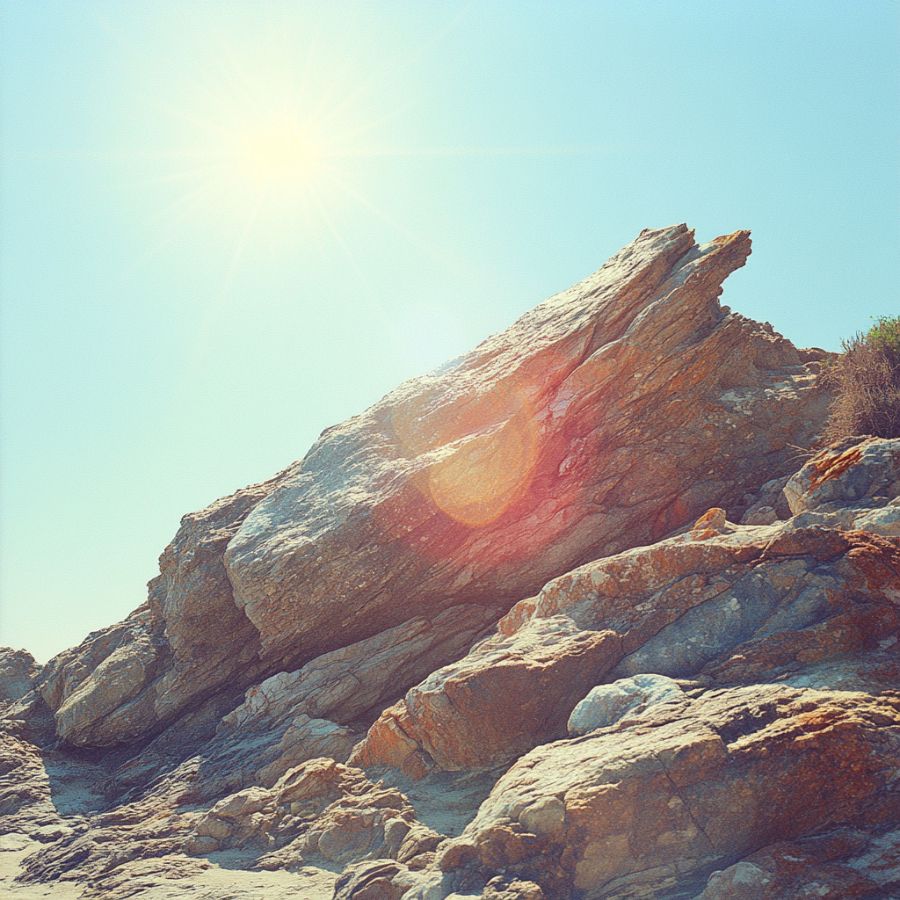
Rocky outcrops are prime locations for finding crystals and minerals. Search along the edges of outcrops, particularly where erosion has worn away the surrounding soil, revealing the rock underneath.
Pay close attention to any visible cracks, crevices, or small cavities within the outcrop, as these are often where crystals develop and can be extracted with minimal effort.
Stream Beds and Gravel Deposits
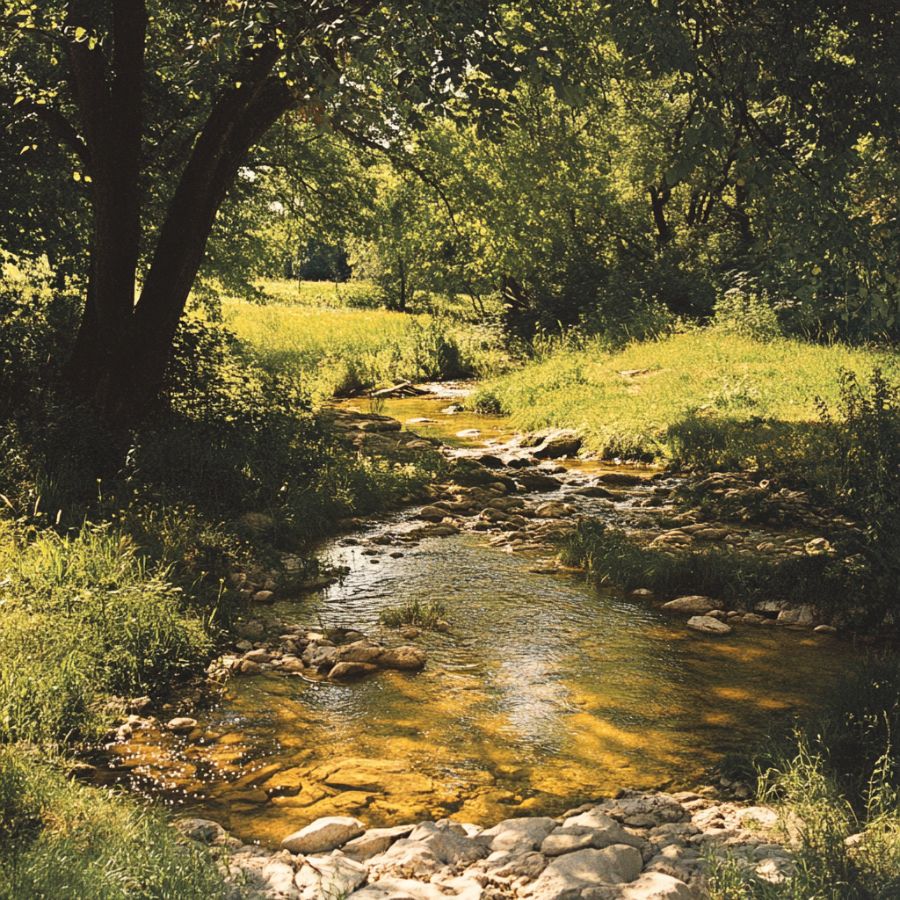
Stream beds are dynamic environments where water flow constantly shapes the landscape. Over time, water can erode rocks upstream, breaking them down and carrying mineral fragments, including crystals, downstream.
When searching in these areas, look for spots where the current has slowed, such as bends in the stream or areas behind large rocks, as these are prime locations for deposits.
Quarries and Mines
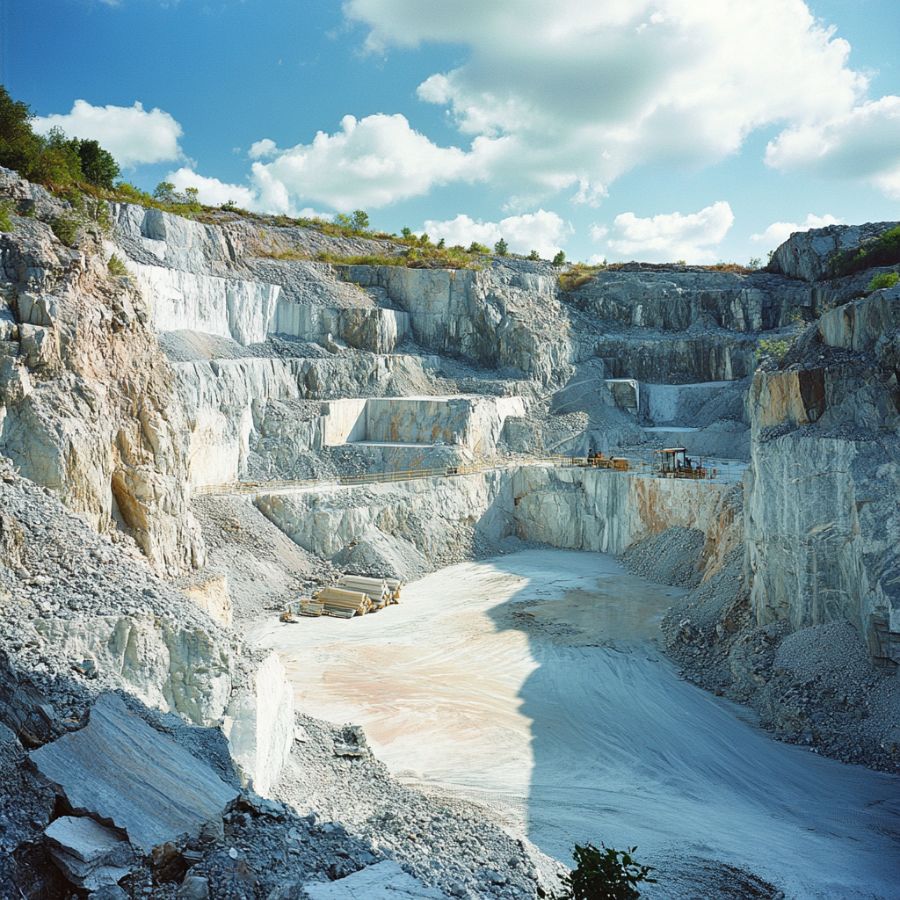
Quarries and mines are excellent places to search for crystals because they expose deep layers of rock that would otherwise be hidden beneath the surface. These sites often contain a variety of minerals and crystals that have been brought to the surface during excavation.
Pay attention to tailings piles, where waste rock is discarded, as they often contain overlooked or broken crystals. Always prioritize safety when exploring these areas and ensure that you have permission to search.
Road Cuts and Construction Sites
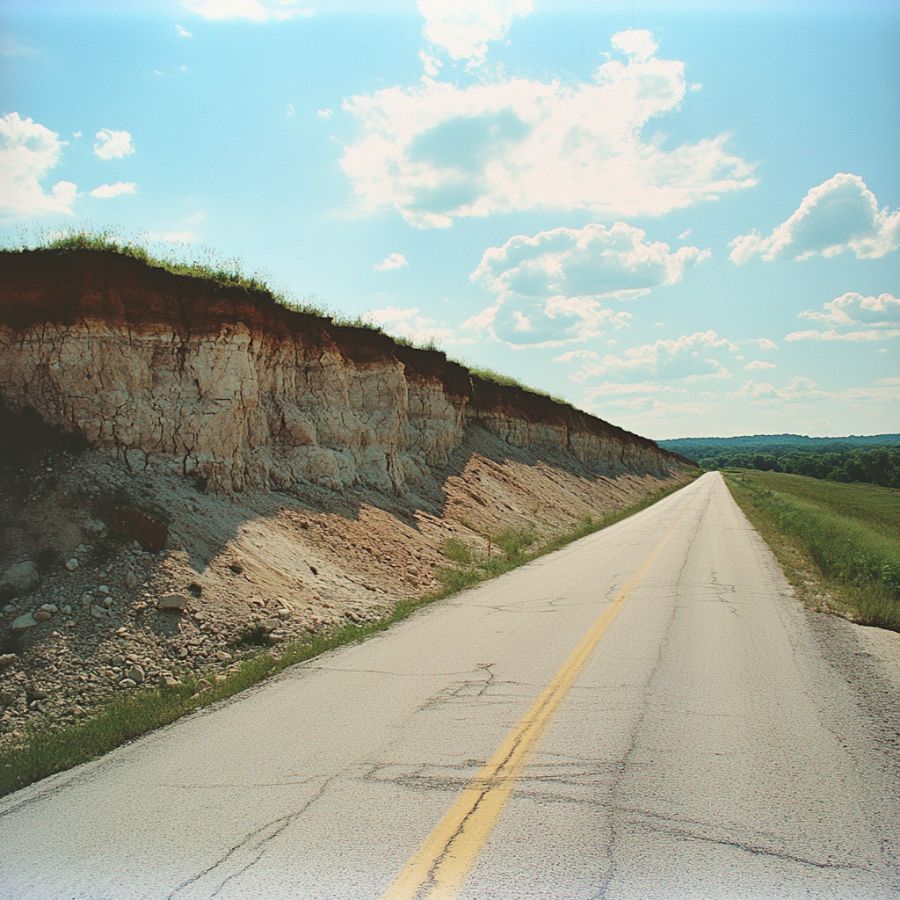
As roads are cut through hillsides or construction projects dig deep foundations, layers of rock and soil that have been undisturbed for millions of years are suddenly exposed.
Look for freshly exposed rock faces, especially where blasting has occurred, as this can create fissures or expose pockets filled with crystals. Be cautious around active construction sites, and always seek permission before exploring.
Mountainous Areas

In mountainous regions, erosion caused by wind, rain, and ice can wear away the softer rock, exposing harder crystals that have formed within. Focus on weathered and broken rock formations.
Look for scree slopes, where loose rock has accumulated at the base of cliffs. Additionally, areas near fault lines or volcanic vents are particularly promising, as they often have a higher concentration of minerals.
DON'T MISS OUT ON ANY GREAT FINDS!
While you're out searching for Crystals you're going to find A LOT of other interesting rocks and minerals along the way. The last thing you want to do is toss out something really interesting or valuable. It can be easy to misidentify things without a little guidance.
We've put together a fantastic field guide that makes identifying 140 of the most interesting and valuable rocks and minerals you will find REALLY EASY. It's simple to use, really durable, and will allow you to identify just about any rock and mineral you come across. Make sure you bring it along on your hunt!
Arizona Crystal Mining Laws And Regulations
Crystal mining is legal in Arizona, but it’s crucial to always abide by the local collecting laws of our state, especially the ones imposed by the Arizona Department of Mines and Mineral Resources (ADMMR) on public lands.
Also make sure to obtain any necessary permits or permissions from concerned government offices or private individuals like the owner of any private land that you will explore.
By respecting these local guidelines, you are helping ensure the sustainability of crystal mining in our state.
- The extensive local experience and understanding of our team
- Input from multiple local crystal hunters and crystal collecting groups
- The accessibility of the crystal mining locations
- Safety and potential hazards when collecting
- Private and public locations
- A desire to include locations for both experienced crystal hunters and those who are just starting out
Using these weights we think we’ve put together the best list out there for those who love finding new crystals for our collections!
The Best Locations For Crystal Mining in Arizona
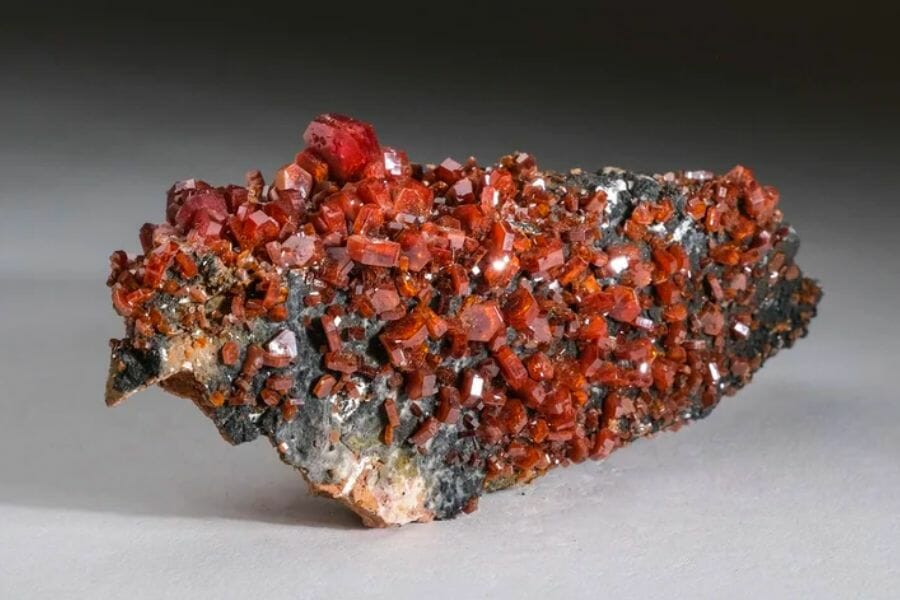
We’re sharing our top 5 recommended places for crystal hunting in Arizona. During our visit, these are where we had the best success finding crystals, and we’re hoping you’ll experience the same, too!
Always Confirm Access and Collection Rules!
Before heading out to any of the locations on our list you need to confirm access requirements and collection rules for both public and private locations directly with the location. We haven’t personally verified every location and the access requirements and collection rules often change without notice.
Many of the locations we mention will not allow collecting but are still great places for those who love to find beautiful rocks and minerals in the wild without keeping them. We also can’t guarantee you will find anything in these locations since they are constantly changing.
Always get updated information directly from the source ahead of time to ensure responsible rockhounding. If you want even more current options it’s always a good idea to contact local rock and mineral clubs and groups
Agua Fria River is Our Favorite Crystal Mine in Arizona
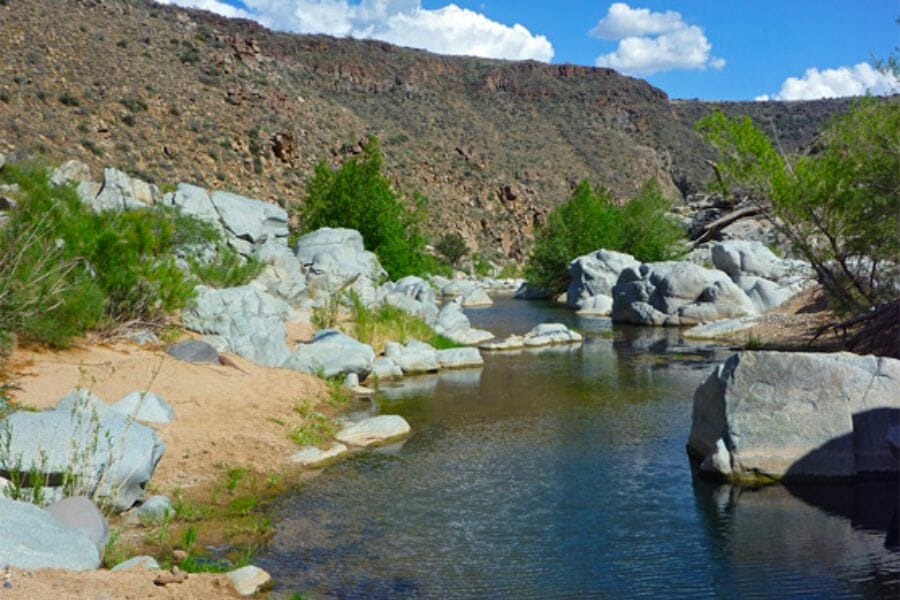
Avondale, AZ
The Agua Fria River has a rich history, having been inhabited by various indigenous groups for thousands of years. Today, it’s a popular spot for outdoor enthusiasts and rockhounds looking to explore its diverse geology. In fact, it’s one of the best places to mine gems in Arizona.
The river flows for approximately 120 miles through central Arizona, with its headwaters located in the Bradshaw Mountains. The river runs through a variety of landscapes, including desert canyons, riparian forests, and grasslands. It’s this diverse geography that makes it a great spot for rockhounding, as you can find a wide variety of minerals and crystals.
Just take note that the area can be challenging to navigate, so it’s a good idea to bring a map or GPS device if you’re visiting. And, as always, make sure to follow Leave No Trace principles and respect the natural beauty of the area.
Where we found crystals around the Agua Fria River
You can find amazing samples of Agate, Chalcedony, and Jasper crystals if you travel on the road from Castle Hot Springs south along the Agua Fria River. From there, you can prospect anywhere on both sides of the river.
DON'T MISS OUT ON ANY GREAT FINDS!
While you're out searching for Crystals you're going to find A LOT of other interesting rocks and minerals along the way. The last thing you want to do is toss out something really interesting or valuable. It can be easy to misidentify things without a little guidance.
We've put together a fantastic field guide that makes identifying 140 of the most interesting and valuable rocks and minerals you will find REALLY EASY. It's simple to use, really durable, and will allow you to identify just about any rock and mineral you come across. Make sure you bring it along on your hunt!
Neptune Mine
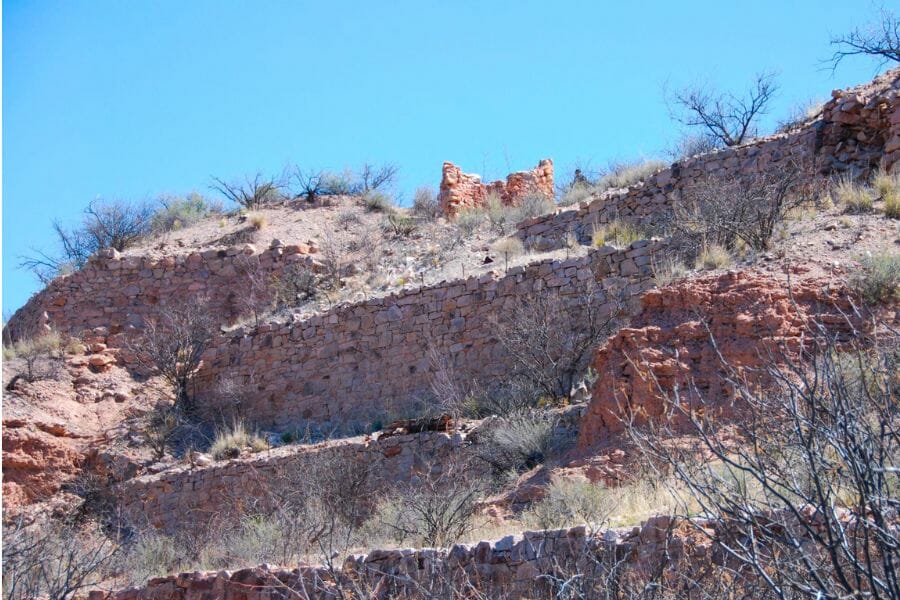
Pima County, AZ
The Neptune Mine is located in the Mineral Mountains of western Arizona and was originally discovered in the early 1900s. It was primarily a copper mine, but also produced other minerals such as silver, gold, and lead. The mine was active until the 1970s, and since then has become a popular spot for rockhounding and crystal collecting.
The Mineral Mountains, where Neptune Mine can be found, are part of the larger Basin and Range Province of our state. This area is characterized by rugged terrain, deep canyons, and arid landscapes. It’s rich in different varieties of minerals, making it a prime spot for crystal hunting.
In fact, you can find a wide diversity of crystals here, including some rarer ones, that you can uncover through surface collecting and digging. So if you want to visit here, be sure to bring along some basic tools like a rock hammer, chisel, and gloves. And don’t forget to dress appropriately for the desert terrain— you can’t have fun if you’re not prepared for this!
Where we found crystals at Neptune Mine
If you’re here, chances are you’re near crystals. That’s because Neptune Mine abounds with them. You can specially find Fluorite crystals if you explore the different areas of the mine. Know more about crystal prices by checking out our article!
Burro Creek
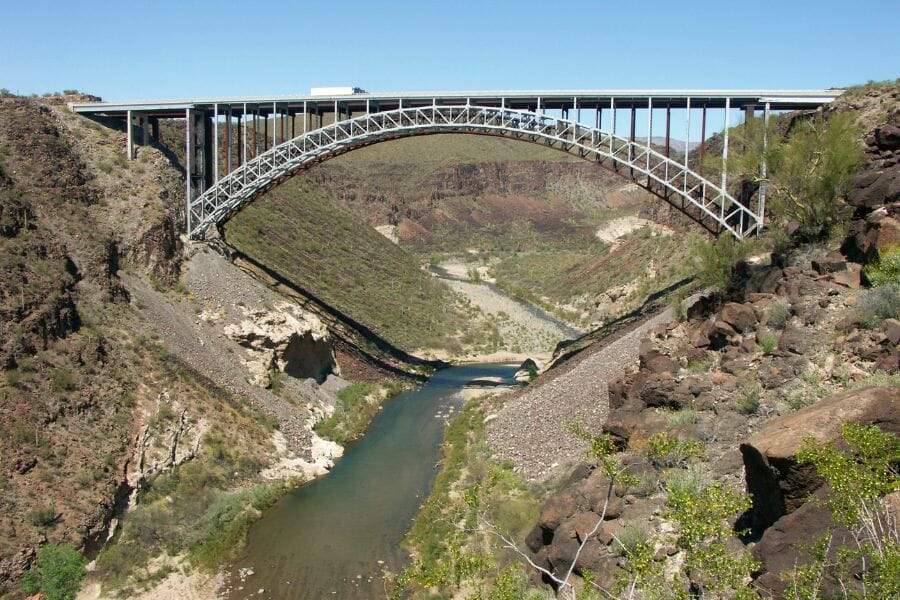
Wikieup, AZ 85360
Burro Creek is a must-see for rockhounds here! A tributary of the Bill Williams River, the creek is located in western Arizona. Its rich mining history dates back to the 1800s when gold was discovered in the region. The Burro Creek was an important water source for early miners and settlers, and today it is a popular destination for rockhounding and crystal collecting.
Since it’s located in the Sonoran Desert, which is characterized by rugged mountains, deep canyons, and a unique variety of flora and fauna, the geology of the creek is diverse with a mix of sedimentary and volcanic rocks. This makes it an ideal place for crystal hunting!
When visiting here, be sure to bring along some basic tools like a rock hammer, chisel, and gloves. We don’t want to explore this fantastic place without the right tools after all.
Where we found crystals at Burro Creek
We had the best of time finding Arizona crystals when we explored 15.75 miles southeast on US-93 to the bridge over Burro Creek. We collected a variety of these natural wonders downstream to the Black Canyon Mouth.
Ellison Creek
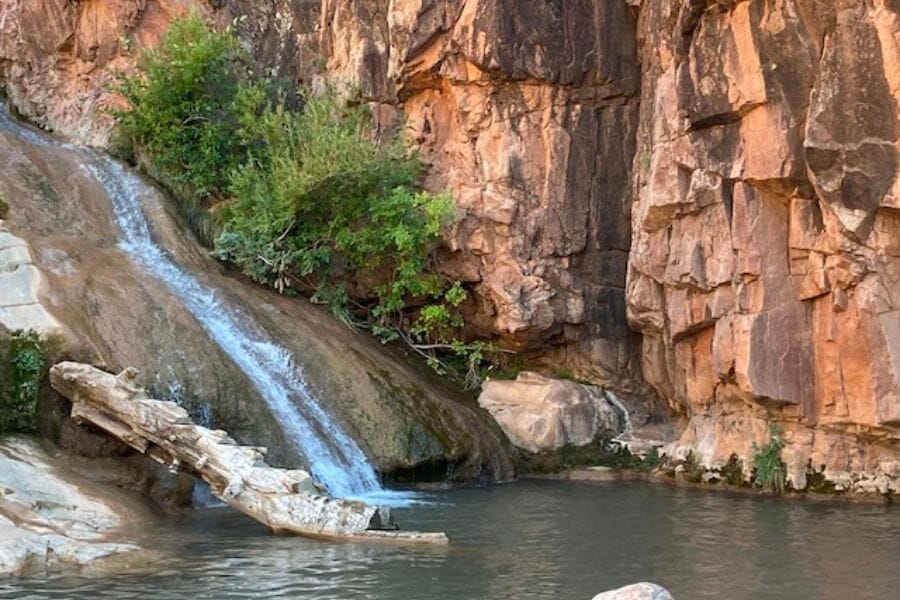
Gila, AZ 85541
The beautiful Ellison Creek is known for its stunning crystal formations, making it a popular spot for rockhounding enthusiasts. It’s located in the Tonto National Forest and was once a vital water source for the Native American tribes that lived in the area. Today, the creek is a popular spot for outdoor activities such as hiking, camping, and, of course, rockhounding.
Ellison Creek is a tributary of the East Verde River and it flows through a beautiful canyon surrounded by towering cliffs. The area’s geology is primarily sedimentary, with layers of sandstone and shale that have been uplifted and eroded over time. The rocks in this area are rich in minerals and crystals, too.
Suffice to say, Ellison Creek is a rockhound’s paradise with an abundance of beautiful crystals and minerals waiting to be discovered!
Where we found crystals at Ellison Creek
You can find great specimens of Agate, Jasper, and other mesmerizing crystals if you explore the area around Ellison Creek.
Oxbow Mine
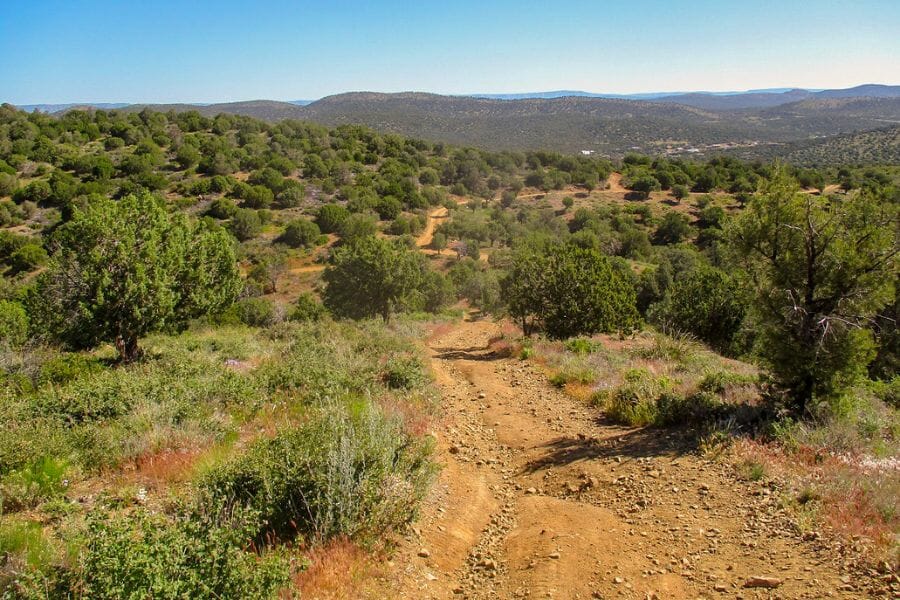
Gila County, AZ
The Oxbow Mine is located near the town of Safford. It was first discovered in the 1960s and was primarily used for copper and turquoise mining. However, in recent years, it has become known for its incredible mineral and crystal specimens.
The mine is situated in the Gila Mountains, which are a part of the larger Basin and Range Province. The area is characterized by its steep, rugged terrain, and unique geology. The rocks in this area are primarily volcanic, with layers of ash and tuff that have been weathered and eroded over time. This has resulted in the formation of stunning crystal deposits that can be found throughout the mine.
With this, the Oxbow Mine is a hidden gem for rockhounding enthusiasts because of its abundance in stunning minerals and crystals. If you’re visiting here, it’s important to note that the mine is located on private land, so it’s essential to obtain permission before exploring the area.
Where we found crystals at Oxbow Mine
We recommend that you explore the area copper mines of Oxbow Mine if you’re looking to find Copper, Epidote, Fluorite, and other equally stunning crystals here.
Our Other Favorite Places For Crystal Hunting
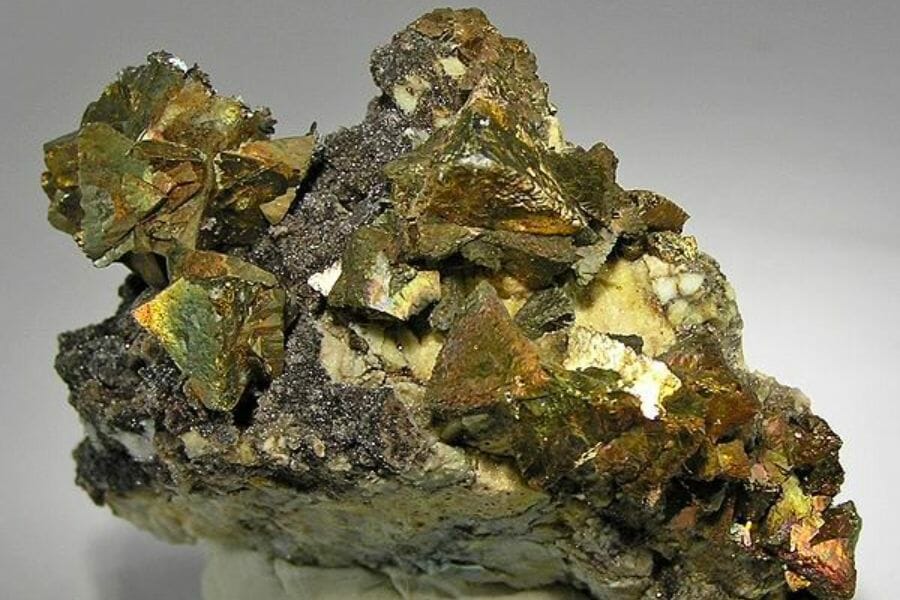
With a place as big and as rich in natural resources as ours, it’s no surprise that there are tons of other places for crystal mining here. In fact, you can even find Arizona geodes in some of these locations. Check these out:
Where you can find crystals for free in Arizona
For sure you know that, in most cases, the best sites to find crystals require some fee. However, there are equally amazing areas that you can explore without spending a dime. Here are some of them:
| County | Location |
| Apache | In the Chinle Formation at Echo Cliffs |
| Coconino | Downstream in Rogers Draw to Sand Creek |
| Gila | Southwest 2½ miles at Peridot Mesa |
| Graham | Along the Deer Creek Basin |
| Greenlee | North on US-666 to the first canyon on the left on Upper Eagle Road |
| Mohave | In the Cerbat Mountains, 1 mile east of Mineral Park on the slopes of Ithaca Peak |
| Navajo | Upstream in Oraibi Wash |
| Pinal | Downstream on the south bank of the Gila River |
| Yavapai | About 500ft. from the entrance of Cathedral Cave |
Other great places to dig for crystals
If you’re good with spending a few bucks to find and dig for Arizona crystals, we’ve also compiled some of the best recommendations here. Make sure to reach out out to first before visiting as the fees may vary depending on the season (or they may be free on certain seasons, who knows?!).
| County | Location |
| Cochise | At the Copper Queen Mine, Shattuck Mine, Arizona Mine, old Tiffany Turquoise Mine, Lucky Cuss Mine, and area mines of Gleason-Courtland District |
| Gila | At the Apache Mine, Global area copper mines, No. 79 Mine, Inspiration Mine, Keystone Mine, Live Oak Mine, Castle Dome Mine, Phillips Mine, Chrysotile Mine, and Silver Butte Mine |
| Greenlee | At the Detroit Mine and Manganese Blue Mine |
| Maricopa | Area of surrounding washes, draws, hillsides of Arizona Agate Mine |
| Mohave | Many area old mines like Little Kimball Mine |
| Pima | In the copper mines and pits especially in the New Cornelia Open Pit |
| Pinal | On dumps of Mammoth Mines and at the Olsen Mine |
| Santa Cruz | Many area mines of Duquesne, Patagonia District, Ruby, and Washington District |
| Yuma | Area mines of Castle Dome District |
The Best Crystal Shops In Arizona
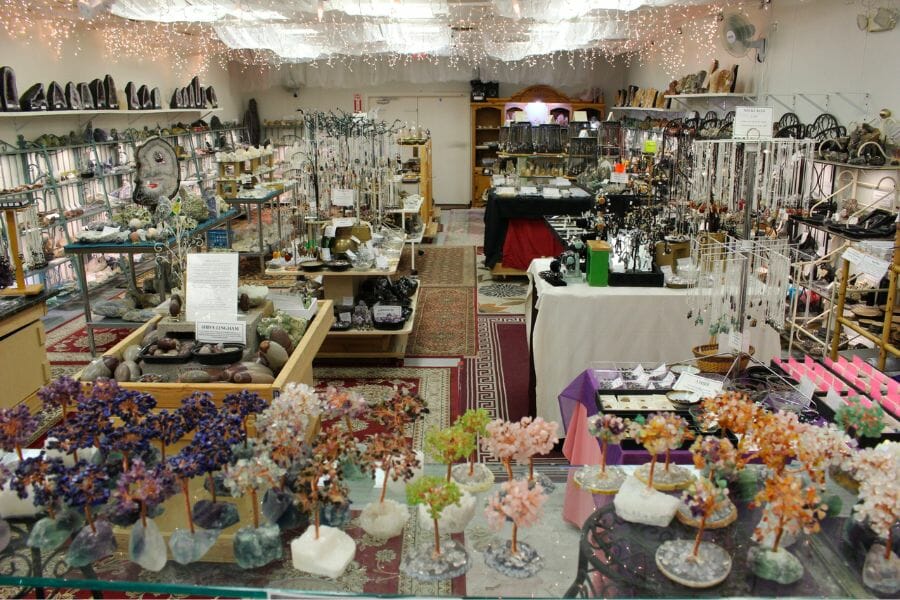
Crystal hunting isn’t exactly for the faint of heart, so if you prefer the chill way to find crystals here, better visit the local crystal shops here. What’s amazing about this is that you can often find rich varieties of crystals— including rare ones— in these shops:
- Fantasia Crystals – 5108 N 7th St, Phoenix, AZ 85014)
- Stones Crystal Shop – 7085 E 5th Ave, Scottsdale, AZ 85251)
- Everything Just Rocks – 2235 W 1st St Unit 104-105, Tempe, AZ 85281
- Black Market Minerals – 5000 S Arizona Mills Cir Suite 502, Tempe, AZ 85282
- Star Woman Crystals – near Scottsdale Rd &, E McKellips Rd, Tempe, AZ 85281
- Stardust & Sage Crystal Shop – 610 E Roosevelt St # 136, Phoenix, AZ 85004
- Forgotten Rarities – 64 N 45th Ave Suite A, Phoenix, AZ 85043
- Natural Expressions, Inc. – 13802 E Williams Field Rd, Gilbert, AZ 85295
- Buried Treasures Crystal Boutique – 16610 N 75th Ave Suite 105, Peoria, AZ 85382
- Serenity Rocks – 6055 E Southern Ave Suite 101, Mesa, AZ 85206
Additional places to find crystals in nearby states
If you’ve already tried all of our recommendations above or are planning a trip out of the state, you should check out our guides for neighboring states:
- Crystals in California
- Crystals in Nevada
- Crystals in Utah
- Crystals in Colorado
- Crystals in New Mexico
- Crystals in Alaska
If you have any recommendations we haven’t covered, please leave them in the comments below!

